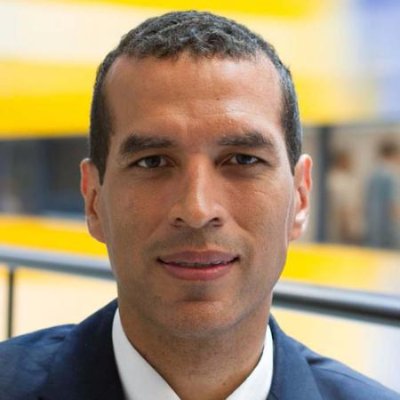Victor Padilla Taylor, a 2015 graduate of Yale School of Management (SOM)’s Master of Advanced Management (MAM) program, reveals in this week’s Fridays from the Frontline how his time at SOM helped prepare him to confront humanitarian disasters in his current role as a project lead supporting the Logistics Emergency Teams (LET) at the World Economic Forum.
Yale SOM’s unique MAM program is a one-year, post-MBA opportunity open to exceptional graduates of business schools within the Global Network for Advanced Management (GNAM) who aspire to become global leaders for business and society. Taylor came to Yale SOM for this additional training after obtaining his MBA from Pontificia Universidad Católica de Chile, one of the 29 schools that comprise the GNAM.
Read on to learn how classes like “Supply Chain Management,” “Managing Social Enterprises,” and “Global Challenges” helped arm Taylor with the know-how and experience to confront humanitarian crises ranging from violence and conflict to natural disasters like earthquakes and typhoons. Our thanks to Yale SOM and Taylor for allowing us to share his story with the Clear Admit audience.
The following post has been excerpted from its original source, the Yale SOM MAM Blog.
How the Yale SOM MAM Program Prepared Me to Lead in a Humanitarian Disaster
By Victor Padilla Taylor

To be effective in dealing with a major, multifaceted problem such as a humanitarian disaster, you need an advanced set of skills and a trained mindset to think systemically and creatively. In my role at the World Economic Forum supporting the Logistics Emergency Teams (LET), I have found that my time as a student in the Master of Advanced Management program at the Yale School of Management provided me with the knowledge and skills that I need for such a complex undertaking.
According to the United Nations, last year there were 128.6 million people affected by conflict, violence, and disaster in the world. Among those numbers, 96.9 million required humanitarian assistance–three times more than 10 years ago. This means that global humanitarian financing has surged to unprecedented levels, or $22 billion a year, raising the need for more efficiency and accountability in how this assistance is provided.
One of my courses during my time at SOM was Supply Chain Management. Professor Sang Kim taught us how to better manage the flows of materials and information among all stakeholders involved in fulfilling the needs of end users like beneficiaries of humanitarian assistance. When you consider that between 60 and 80 percent of emergency response spending is related to logistics you can easily understand how important it is to master strategic- and operational-level supply chain problems and quantitative tools.
Another course that provided me with key insights for my current work was Managing Social Enterprises. Impact measurement is a central concern among stakeholders in the humanitarian community. I learned from Professor Kate Cooney how to establish assessment frameworks with indicators that validate our social efforts both for the short and long term (this is called “theory of change”). I also learned about how to prioritize competing stakeholder claims, going beyond just identifying each of them and understanding the dynamics inherent to each relationship (this is called “stakeholder theory”). While deploying assistance to populations in need, you often find yourself mapping key players in your work at the global, country, and individual levels. When disaster strikes, you can face millions of affected people–hundreds of thousands of whom are displaced–and hundreds of organizations coming from all around the world to assist in response. Understanding the disparate needs of all involved—and how to manage them—is crucial.
Read the conclusion of Taylor’s post here.








